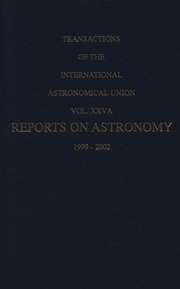No CrossRef data available.
Article contents
21. Light of the Night Sky
Published online by Cambridge University Press: 25 April 2016
Extract
The light of the night sky consists of atmospheric components (airglow, light scattered in the atmosphere) and – even in the case of spaceborne observations – of zodiacal, galactic and extragalactic light. Although all components are of similar importance, investigations on zodiacal light have profitted most by the space age since their object of research, the interplanetary dust cloud, became accessible to direct in-situ measurements. Lunar samples and measurements by micrometeoroid detectors provide individual and eventually detailed information on impact events, which however are limited in number and therefore restricted in statistical significance. Zodiacal light investigations involve scattered light of many particles in large volume elements and therefore provide global information about physical properties and spatial distribution of interplanetary dust grains, however just in terms of average values. Therefore both sources of information are complementary and a synthesis can only be achieved by synoptic interpretation of zodiacal light, micrometeoroid, and meteoroid investigations also including dynamical aspects. Measurements of zodiacal light (and emission) from rockets, manned or non manned spacecraft, and deep space probes gained drastically in importance compared to ground based observations. On the other hand investigations on airglow have become more and more a topic of geophysics Caeronomy). They remain relevant however to astronomy as far as photometric features are concerned. These general trends continued in the last triennium and have influenced the activities of our commission.
- Type
- Research Article
- Information
- Copyright
- Copyright © Reidel 1985


